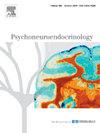冲突和流离失所对孕产妇健康的影响:泰缅边境北部分娩后的生命历程暴力、时间和产妇压力。
IF 3.4
2区 医学
Q2 ENDOCRINOLOGY & METABOLISM
引用次数: 0
摘要
武装冲突、流离失所和相关暴力在全球范围内不断升级,主要集中在边境地区的平民和移民中,对妇女和儿童造成严重伤害。本研究调查了妇女一生中的冲突和流离失所经历如何与泰缅边境地区的产妇压力和产后健康结果(尤其是压力、心理健康和心脏代谢结果)相关联。分析基于一项横断面人群母婴健康调查,该调查于 2017-18 年在泰国北部沿缅甸边境地区的难民营、工地和居民家中收集了 701 名母亲的数据。结果表明,冲突暴力如何影响当代压力和健康取决于冲突暴力暴露的结果、程度和时间,以及流离失所背景下的后续环境威胁和匮乏。过去的冲突暴力与感知压力(PS)和广泛性焦虑症(GAD)症状有关,但与抑郁症无关。它还与下丘脑-垂体-肾上腺(HPA)轴活动(毛发皮质醇浓度)和肥胖(腰围和腰臀比)有关。此外,始于童年时期的冲突暴力对 PS、GAD 和肥胖有特别显著的影响;暴力的程度和时间对 HPA 活动有共同的影响。流离失所后的因素也可独立预测较高的血压,并在冲突暴露与 PS 和 GAD 症状之间的关联中发挥潜在的部分中介作用。本文章由计算机程序翻译,如有差异,请以英文原文为准。
Echoes of conflict and displacement in maternal health: Life-course violence, timing, and maternal stress after childbirth at the northern Thailand-Myanmar border
Armed conflict, displacement, and related violence is escalating globally, concentrated among civilians and migrants in border areas, and poses grave harms to women and children. The current study investigates how women’s life-course experiences of conflict and displacement are linked to maternal stress and health outcomes after childbirth at the Thailand-Myanmar border, specifically stress, mental health, and cardiometabolic outcomes. Analyses are based on a cross-sectional population-based maternal and child health survey of 701 mothers, collected in 2017–18 in northern Thailand along the Myanmar border, including in camps, worksites, and residential homes. Results suggest that how conflict violence shapes contemporary stress and health depends on the outcome, level and timing of conflict violence exposure, and subsequent contextual threats and deprivation in displacement contexts. Past conflict violence was associated with symptoms of perceived stress (PS) and generalized anxiety disorder (GAD) but not depression. It was also associated with hypothalamic-pituitary-adrenal (HPA) axis activity (hair cortisol concentration) and adiposity (waist circumference and waist-to-hip ratio). Additionally, past conflict violence that began in childhood was particularly salient for PS, GAD, and adiposity; and level and timing of violence were salient jointly for HPA activity. Post-displacement factors also independently predicted higher blood pressure and played a potentially partial mediating role in the association between conflict exposure and both PS and GAD symptoms.
求助全文
通过发布文献求助,成功后即可免费获取论文全文。
去求助
来源期刊

Psychoneuroendocrinology
医学-精神病学
CiteScore
7.40
自引率
8.10%
发文量
268
审稿时长
66 days
期刊介绍:
Psychoneuroendocrinology publishes papers dealing with the interrelated disciplines of psychology, neurobiology, endocrinology, immunology, neurology, and psychiatry, with an emphasis on multidisciplinary studies aiming at integrating these disciplines in terms of either basic research or clinical implications. One of the main goals is to understand how a variety of psychobiological factors interact in the expression of the stress response as it relates to the development and/or maintenance of neuropsychiatric illnesses.
 求助内容:
求助内容: 应助结果提醒方式:
应助结果提醒方式:


